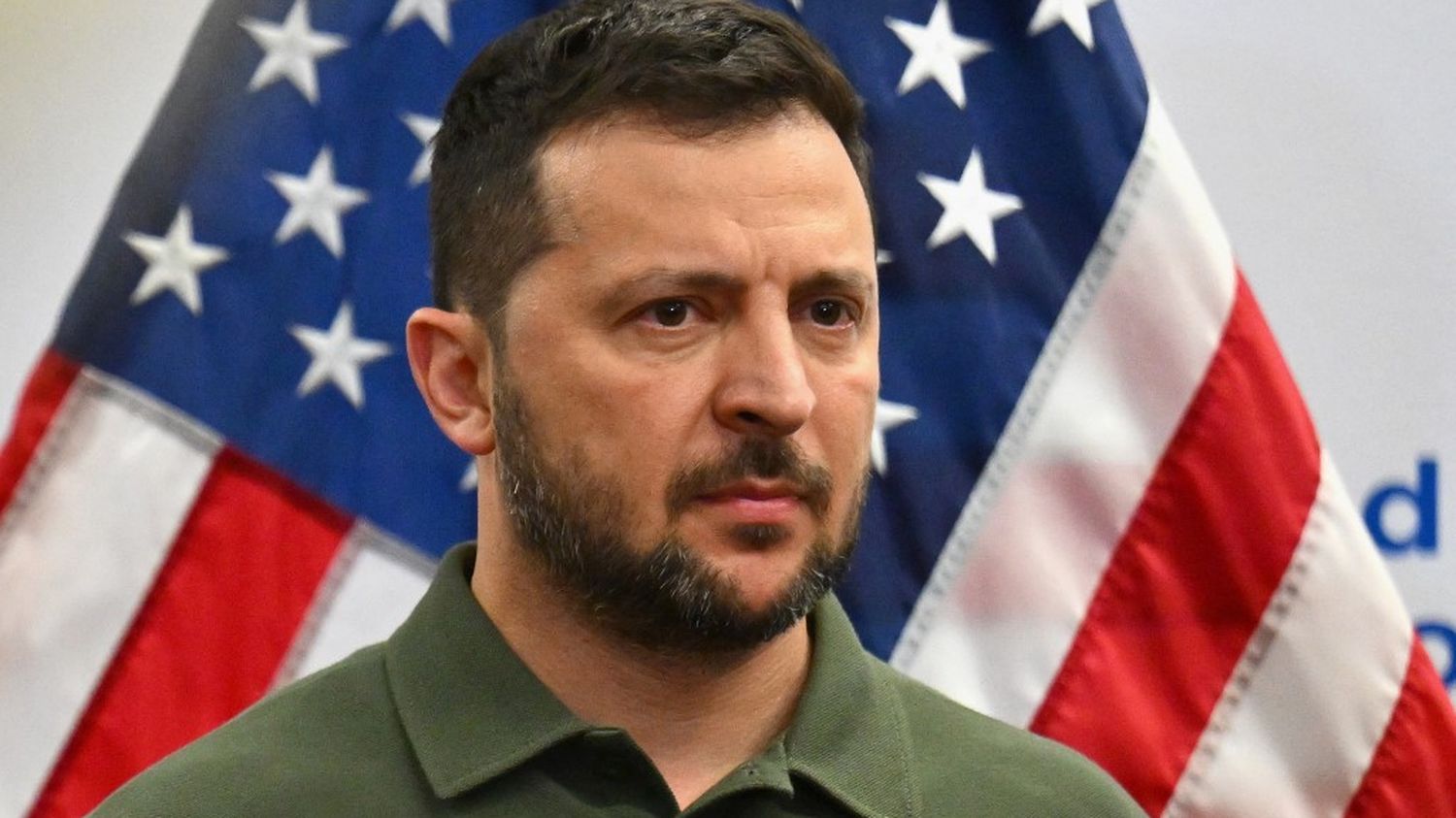While support for Ukraine is crumbling within the Republican Party, focused on the next presidential election, Kiev’s management of the conflict is not unanimous among the Biden administration either.
After the United Nations podium, the White House lounges. Ukrainian President Volodymyr Zelensky, visiting the United States, is expected on Thursday September 21 for a meeting in Washington with Joe Biden, his American counterpart. The democratic president, a fervent supporter of kyiv, reaffirmed his positions during a speech given Tuesday to UN countries: “Only Russia stands in the way of peace, because the price to pay for peace [selon Moscou]it is the capitulation of Ukraine and [la cession de] his territory”.
Despite this apparent unity, the friendship between the two heads of state has also gone through areas of turbulence. In recent months, the American media have reported the annoyance of the Biden government, concerning the tone of President Zelensky as well as his pressing requests for weapons and resources. While the American Congress is considering a new aid package for Ukraine, estimated at $24 billion, this issue remains particularly divisive within the Republican Party, who are less and less inclined to support Kiev.
A sometimes cumbersome ally
Faced with Russia, which first annexed Crimea in 2014 before invading the rest of Ukraine eight years later, Volodymyr Zelensky always wanted to ensure the support of Washington. In September 2021, during his very first meeting with Joe Biden, the Ukrainian president obtained positive statements, but no firm commitment regarding support for joining NATO.
Proactive, President Zelensky has distinguished himself by demanding ever more sophisticated weapons, sometimes creating discomfort among his Western allies. First on the issue of tanks, which were finally supplied to kyiv. Abrams tanks are also on their way to Ukraine, as announced by American defense. For fear of escalation, the United States also took almost a year to accept that F-16 fighter planes, of American design, be transferred to the Ukrainian army via several European countries.

Despite incessant requests from kyiv and American parliamentarians, President Biden is still hesitant to send long-range ATACMS-type missiles, capable of striking far behind the Russian border. “In general, we do not support attacks inside Russia. We have focused on providing Ukraine with the equipment and training it needs to regain sovereignty over its territory,” the White House cautiously repeated in May, then in July. She was reacting in particular to the drone attacks that have occurred in Russia in recent months, even if Ukraine has never claimed responsibility for them.
American opinion very divided
For the American government, it is the very attitude of Volodymyr Zelensky that sometimes raises questions. As in July, when the head of state denounced in an inflammatory tweet THE “terms” imposed on Ukraine for integration into NATO. “Uncertainty is a weakness”he scolded at the conclusion of his message, which remained stuck in the throat of the American military command, as reported by the Washington Post.
Despite these upheavals, Joe Biden and the Democratic camp remain in line with the “unwavering support” that the American president had promised after his surprise visit to kyiv on February 21. Mobilization in favor of Ukraine is, however, not so obvious in the United States, where 56% of the population says, for example, that they have confidence in Volodymyr Zelensky, according to a Pew Research Center survey published in July.
In December 2022, after his second visit to the United States, the Ukrainian leader had, it seems, succeeded in his seduction operation with the American public. But months have passed, and positive sentiment toward continued aid to Ukraine has eroded, according to several national polls. In August, a survey carried out for CNN highlighted an unprecedented situation: 55% of Americans surveyed believed that Congress should stop passing new aid packages, while the country has already promised more than 73 billion dollars to its ally, according to the Kiel Institute.
Republicans focused on the presidential election
On the American political spectrum, it is from the Republican side that the calls to stop spending on Ukraine are most numerous. More than half of supporters (56%) of Grand Old Party wish that the United States “do less” in this conflict (against 15% of Democratic voters), according to a YouGov poll for the CBS News channel. But, here too, GOP executives and elected officials are tearing themselves apart as the campaign to nominate the next candidate for the 2024 presidential election has begun.

Given as a favorite in the polls for this primary (around 55% of voting intentions on average as of September 20) and deemed close to the Putin regime, former President Donald Trump systematically opposes the sending of weapons and funds to Ukraine. Instead, the one who considers himself capable of “settle the confit in 24 hours” wants to convince Volodymyr Zelensky to sign an agreement with Russia, which the Ukrainian president has sworn not to do. He is joined on this line by the Republican governor of Florida, Ron DeSantis, second in the polls, who judges that Ukraine “is not part of the major interests of the United States”as RFI reported in mid-March.
Enough to deeply disappoint some of the members of the conservative party, who still intend to weigh in on internal debates as well as in Congress. In mid-August, a campaign by “Republicans for Ukraine”, with a budget of 2 million dollars, was launched to convince the party’s elected officials to vote in favor of new aid for Kiev. In an interactive ranking published Monday, the movement highlighted that out of 222 Republican elected officials in the House of Representatives, 60 have publicly made comments deemed “anti-Ukraine”.
After Volodymyr Zelensky’s visit, all eyes will remain on Washington, where Congress must decide on the new aspect of aid provided to kyiv. This crucial vote must take place no later than September 30, the deadline for finalizing the American federal budget.
